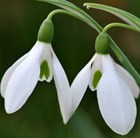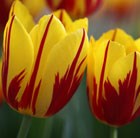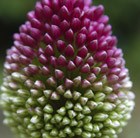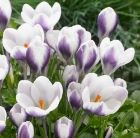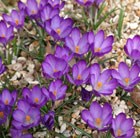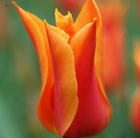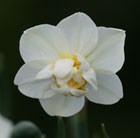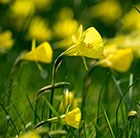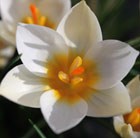Price reductions at Crocus
by Sarah - November 3rd, 2010.Filed under: Crocus, Price Reductions.
Hundreds of price reductions at Crocus
common snowdrop was £2.49 now £1.24
Position:sun or partial shade Soil: humus-rich, moist but well drained soilRate of growth: average Flowering period: January and February Flower colour: white Other features: all parts of the plant may cause a mild stomach upset if ingested; contact with the bulbs may cause skin irritationHardiness: fully hardyBulb size: 4/5It’s hard not to love these wonderful bulbs for adding colour to the garden when little else is awake. The nodding white flowers have a small green marking on the inside of each tepal, are honey scented, and appear in late winter. They look particularly good planted in large drifts in grass where they will naturalise quite happily. Alternatively plant them up in clumps in the front of mixed borders, or into pots so they can be admired close up.Garden care: Plant bulbs 5cm deep in dense clusters to form naturalistic drifts. Where bulbs are planted in grass do not cut the grass until after the leaves have died right back. Divide large colonies after flowering while the leaves are still green for use in other moist, well-drained areas.
single early tulip was £3.99 now £1.49
Position: full sunSoil: fertile, well-drained soilRate of growth: averageFlowering period: early AprilFlower colour: yellow and redOther features: excellent cut-flowersHardiness: fully hardyBulb size: 1/12A single, early hybrid with deep yellow cups that are heavily streaked with blood-red flames. The flowers are quite small but nevertheless they pack a real punch when planted in bold drifts, or where their bright flowers can add early colour to a hot border.Garden care: In September to December plant bulbs 15-20cm deep and 10-15cm apart in fertile, well-drained soil. Alternatively, allow 7-9 bulbs per 30cm sq. After flowering dead-head and apply a balanced liquid fertiliser each week for the first month. Once the foliage has died down naturally lift the bulbs and store in a cool greenhouse.
round-headed leek was £2.99 now £1.49
Position: full sunSoil: fertile, well-drained soilRate of growth: average Flowering period: July to AugustHardiness: fully hardyBulb size: 5/6Small, egg-shaped, claret-coloured flowerheads appear like drumsticks on tall, slender stems above strap-like, mid-green leaves in mid to late summer. Planted en masse in a border in full sun, these diminutive claret flowers look great emerging from a screen of foliage, or against a backdrop of ornamental grasses. They gently fade as summer comes to a close.Garden care: For best effect plant the bulbs 8cm deep in natural drifts. Avoid soils that are too wet, and split and divide large clumps in autumn or spring.
crocus was £2.99 now £1.49
Position: full sunSoil: gritty, poor to moderately fertile, well-drained soilRate of growth: averageFlowering period: February and MarchFlower colour: white with purple-splashed outer petalsOther features: slender, strap-shaped, mid-green leavesHardiness: fully hardyBulb size: 5+Fragrant, white, goblet-shaped flowers with purple-splashed outer petals appear in February and March above the slender, strap-shaped leaves. This beautiful, bi-coloured crocus is perfect for naturalising in sunny, well-drained areas of a shrub border or lawn. For maximum impact plant in bold, naturalistic drifts in gritty, well-drained soil, where they will get plenty of sun.Garden care: Plant bulbs in naturalistic drifts 10cm (4in) deep in September or October.
crocus was £2.99 now £1.49
Position: full sunSoil: gritty, poor to moderately fertile, well-drained soilRate of growth: fast-growingFlowering period: February and MarchFlower colour: purpleOther features: narrow, mid-green leavesHardiness: fully hardyBulb size:5/6Delightful, deep-purple flowers in February and March and narrow, mid-green leaves. This early spring-flowering crocus is one of the best for naturalising in grass. Larger and more robust than other ‘Tommy’ varieties, stands up well to winter weather, dying back gracefully after it has flowered.Garden care: Plant bulbs in naturalistic drifts 10cm (4in) deep in September or October. Where bulbs are planted in grass do not cut the lawn until after the leaves have died back.
lily flowered tulip was £2.99 now £1.49
Position: full sunSoil: fertile, well-drained soilRate of growth: averageFlowering period: Apr-MayFlower colour: orangeOther features: excellent cut-flowersHardiness: fully hardyBulb size: 1/12A lovely lily-flowered tulip with soft tangerine orange flowers, and a heady scent when warmed in the sun. This is a late spring-flowering tulip that looks stunning planted in bold drifts or growing up through forget-me-not flowers.Garden care: In September to December plant bulbs 15-20cm deep and 10-15cm apart in fertile, well-drained soil. Alternatively, allow 7-9 bulbs per 30cm sq. After flowering dead-head and apply a balanced liquid fertiliser each week for the first month. Once the foliage has died down naturally lift the bulbs and store in a cool greenhouse.
double daffodil was £2.99 now £1.49
Position: full sun or partial shadeSoil: well-drained soil Rate of growth: fast-growing Flowering period: March and April Flower colour: creamy-whiteOther features: excellent cut-flowersHardiness: fully hardyBulb size: 10/12A creamy-white, late flowering daffodil which usually appears in clusters on top of the upright stems. The strongly scented flowers do not resemble your traditional yellow trumpets, but are fully double so look ruffled and are said to resemble carnations. They look great planted in small drifts in a mixed or shrub border, or can be potted up as part of a seasonal bedding display.Garden care: Wearing gloves plant bulbs 10-15cm deep and 10cm apart in autumn. After flowering feed with a balanced fertiliser, dead-head the flowers, but do not be tempted to cut back or tidy the foliage after flowering as this will interfere with the bulbs ability to store energy for the following years flowers.
species daffodil was £2.99 now £1.49
Position: full sun or partial shadeSoil: well-drained soil Rate of growth: fast-growing Flowering period: March and April Flower colour:yellow Other features: excellent cut-flowersHardiness: fully hardyBulb size: 6+This is not easily recognised as a traditional daffodil, but its bright golden trumpets give away its ancestry. A low-growing variety, this is best suited to an alpine bed or rockery where it can be used as an early spring specimen. Alternatively pot it up and move it to a prominent spot when they start to flower.Garden care: Wearing gloves plant bulbs 5-10cm deep and 5-10 cm apart in autumn. After flowering feed with a balanced fertiliser, dead-head the flowers, but do not be tempted to cut back or tidy the foliage after flowering as this will interfere with the bulbs ability to store energy for the following year’s flowers.
crocus was £2.99 now £1.49
Position: full sunSoil: gritty, poor to moderately fertile, well-drained soilRate of growth: averageFlowering period: February and MarchFlower colour: white with grey-blue markings on the outer petalsOther features: slender, strap-shaped, mid-green leavesHardiness: fully hardyYellow-centred, white flowers with a faint purple flush on the outside of the petals, add dazzling colour in late winter. Scatter the bulbs in large handfuls on top of the lawn and plant them where they fall to form naturalised drifts, or fill gaps at the front edge of a sunny border with generous clumps. If space is at a premium, they also look sweet when crowded into pots or windowboxes.Garden care: Plant bulbs in naturalistic drifts 10cm (4in) deep in September or October.







